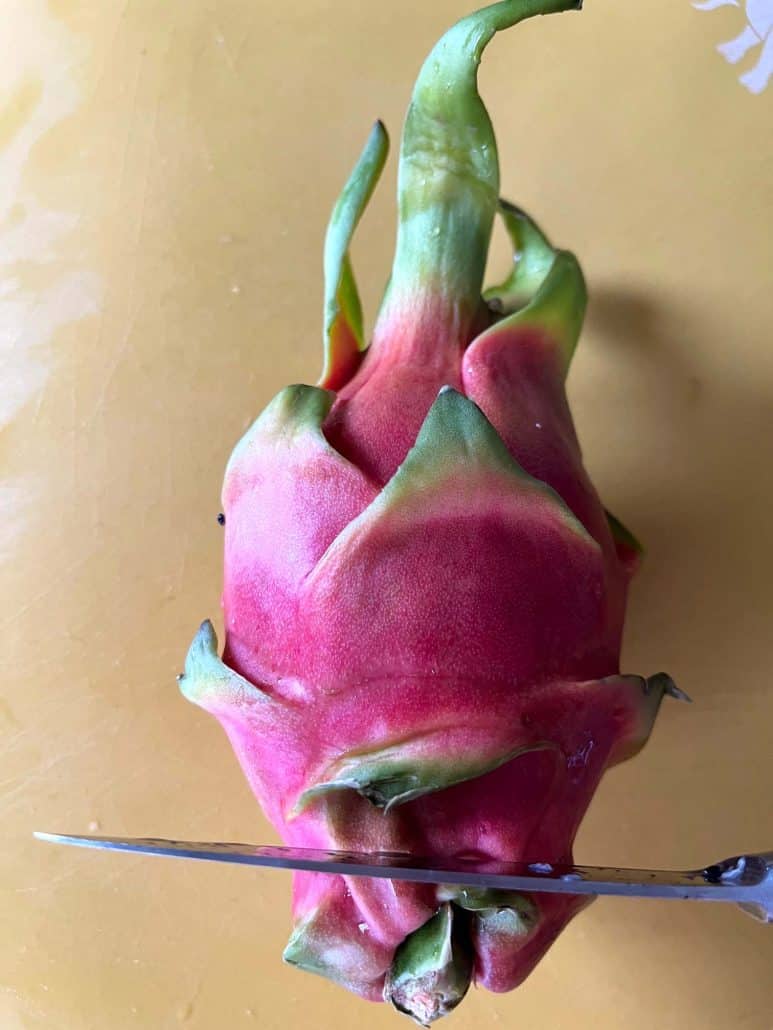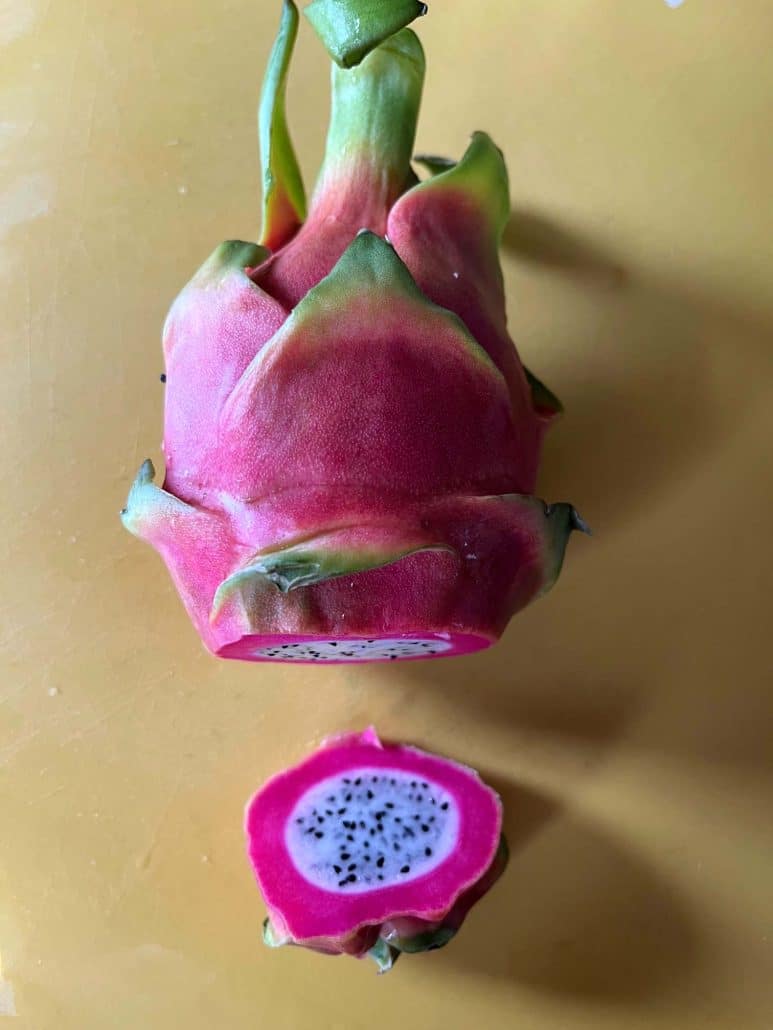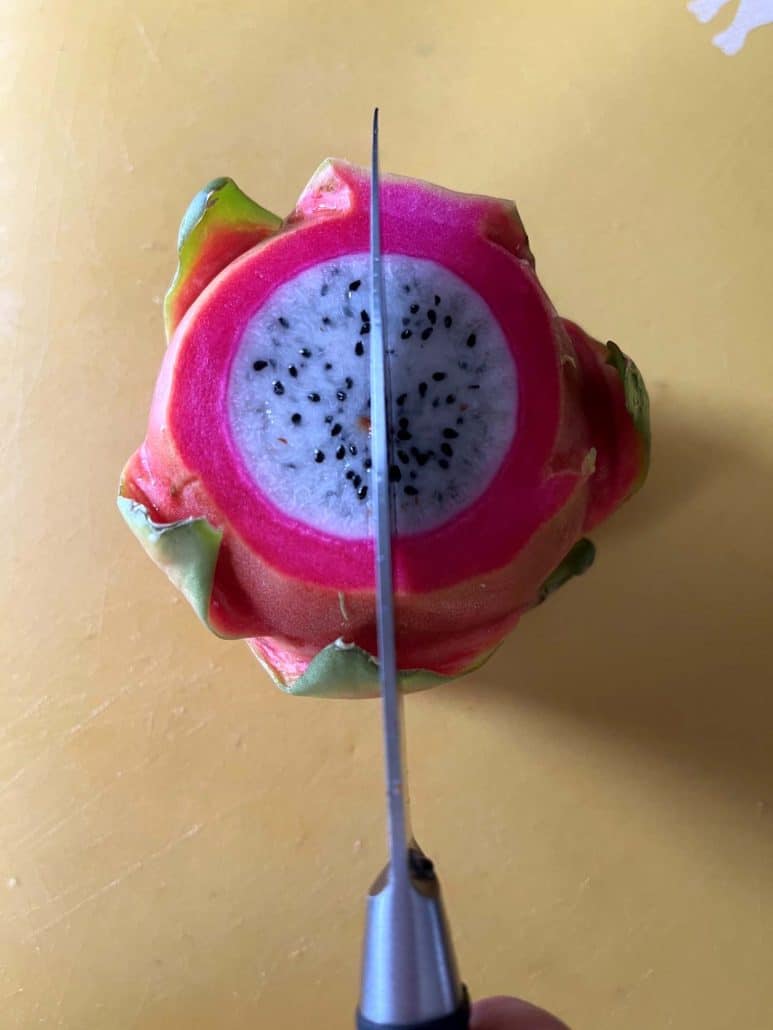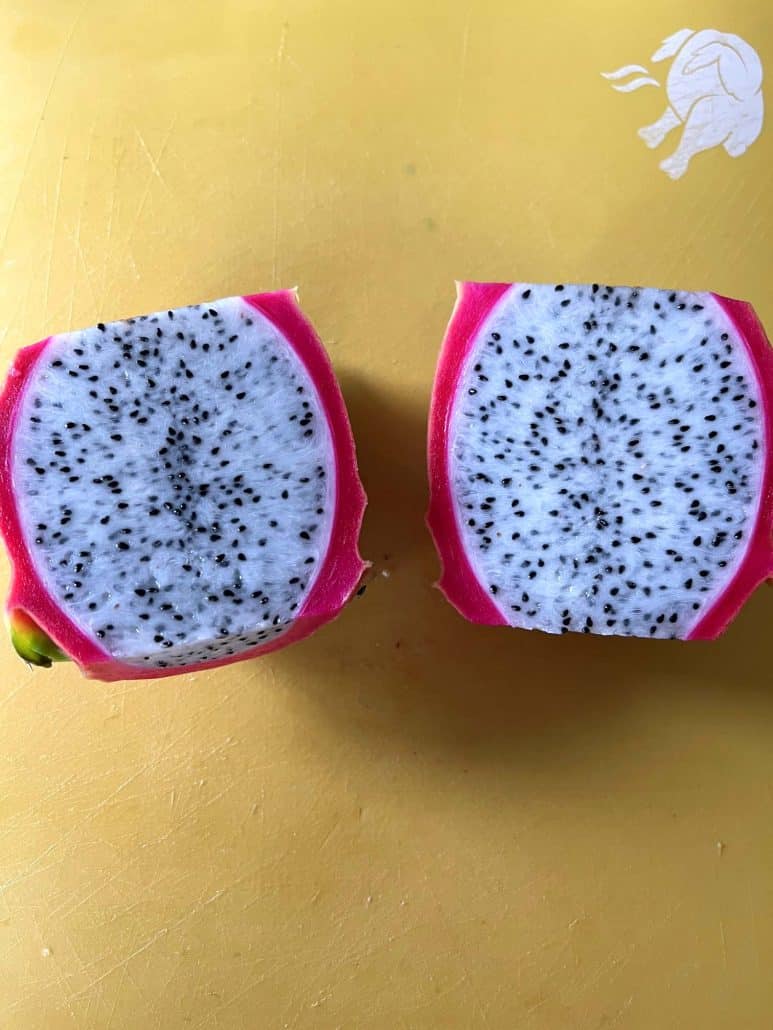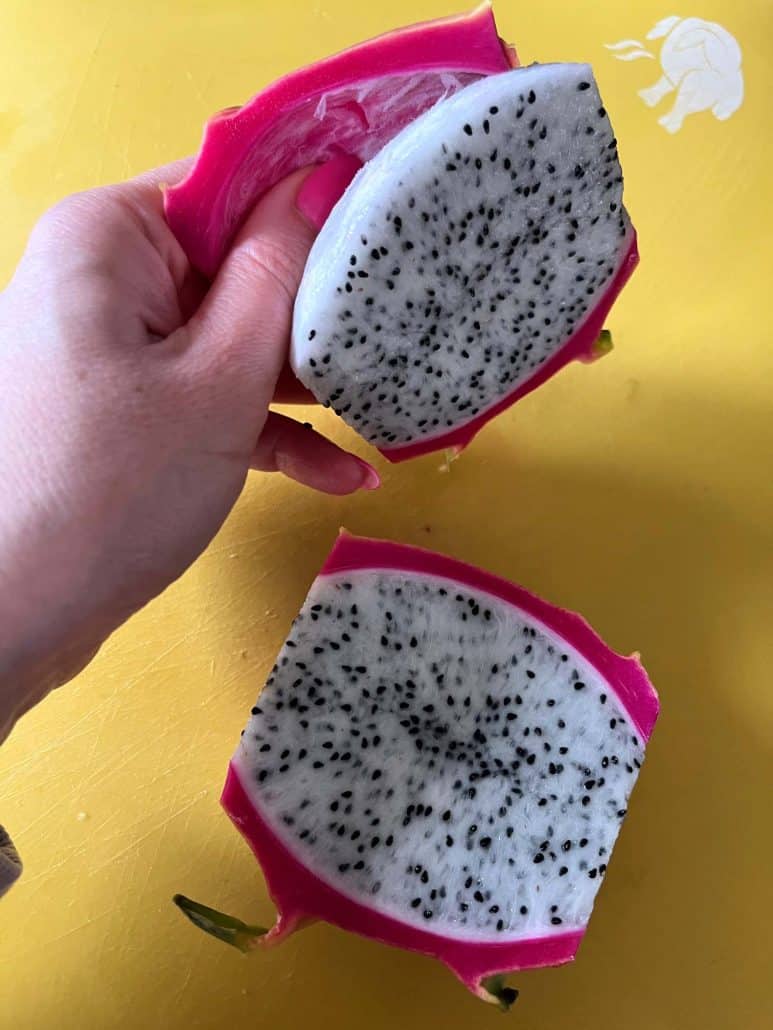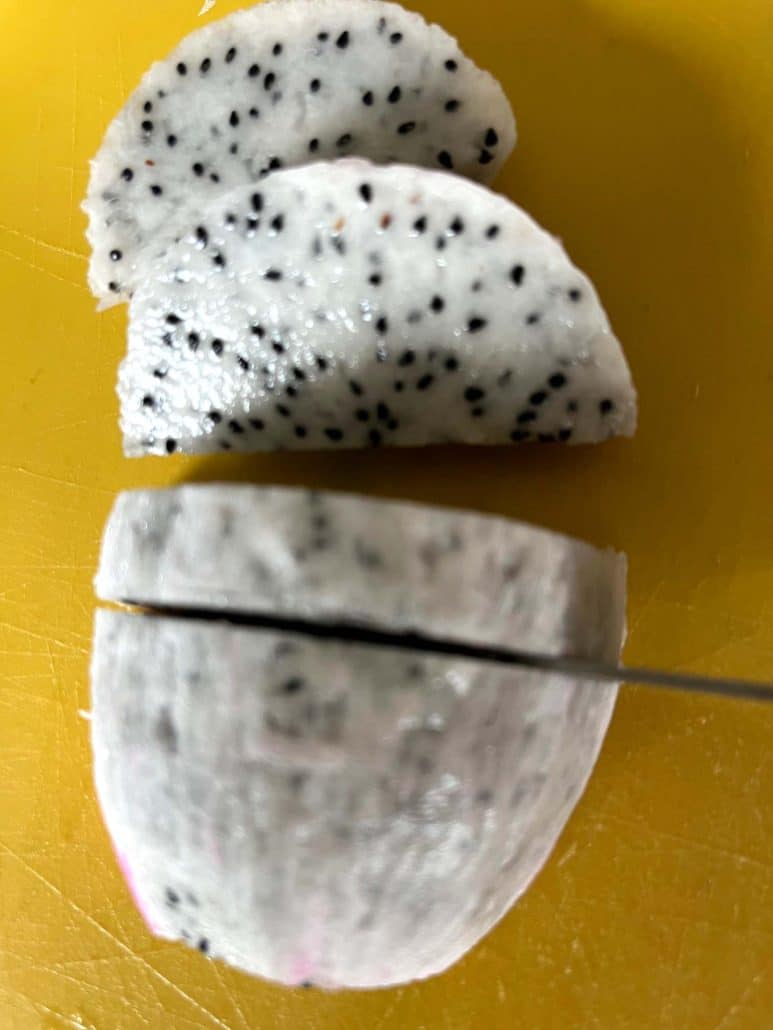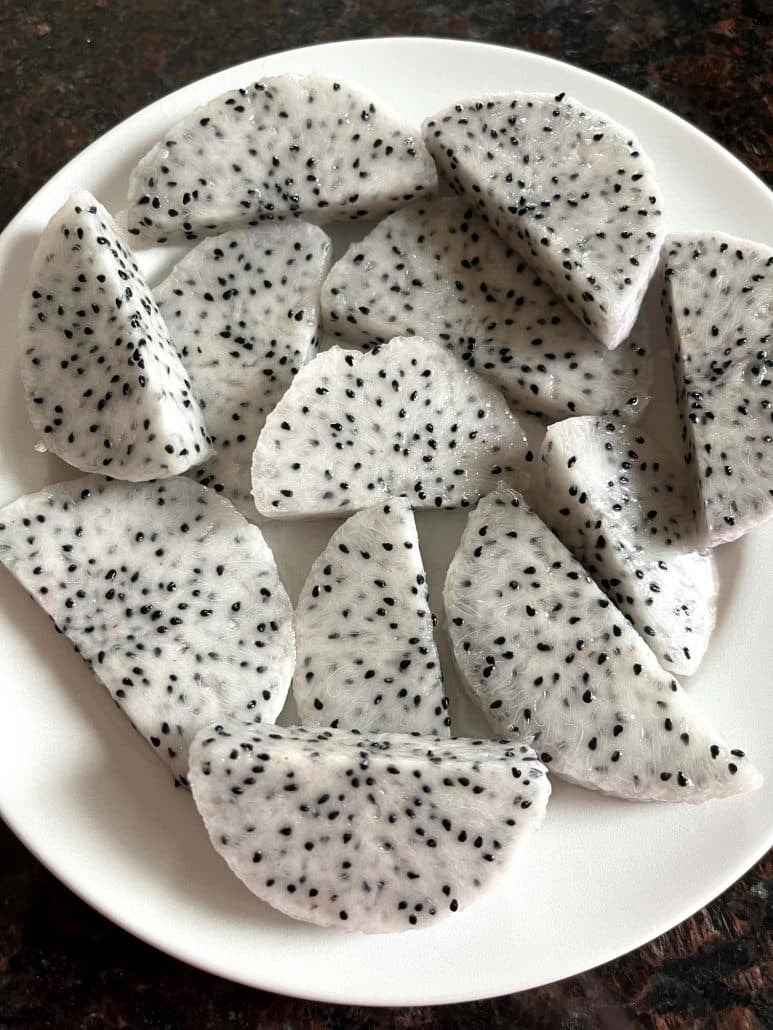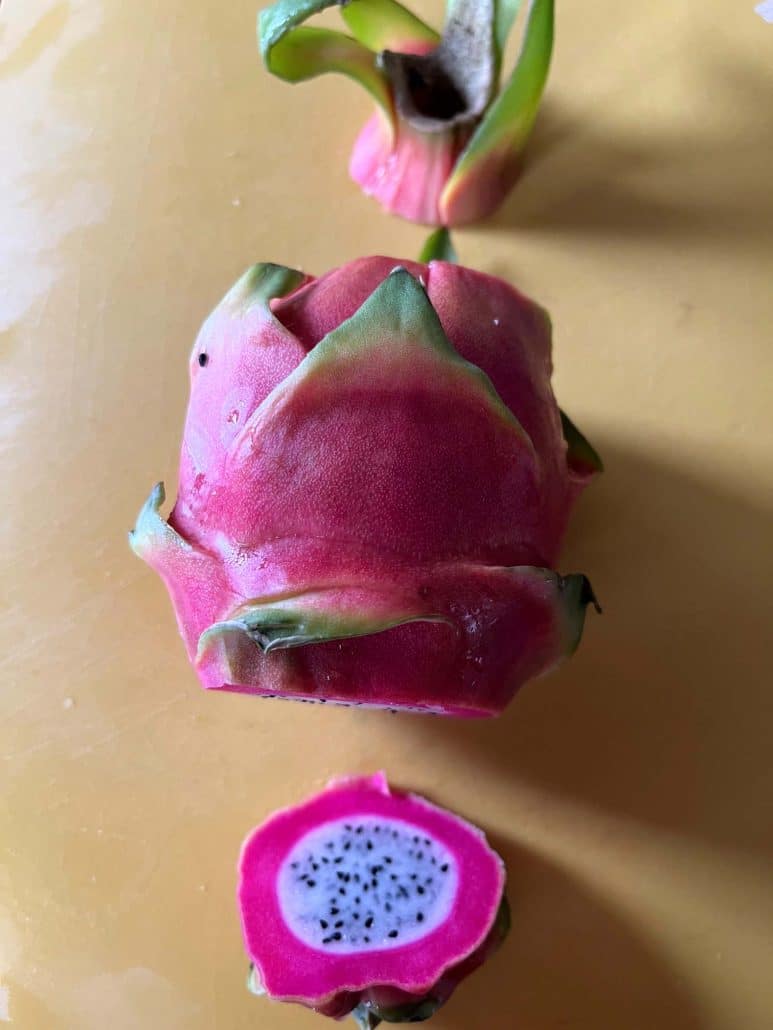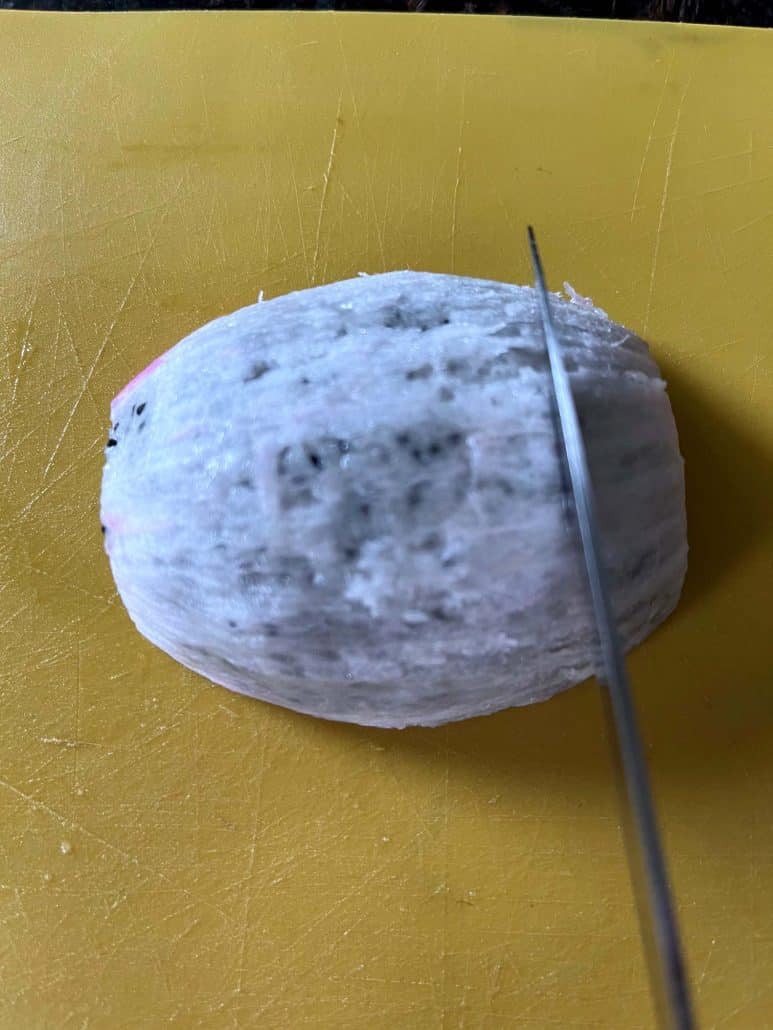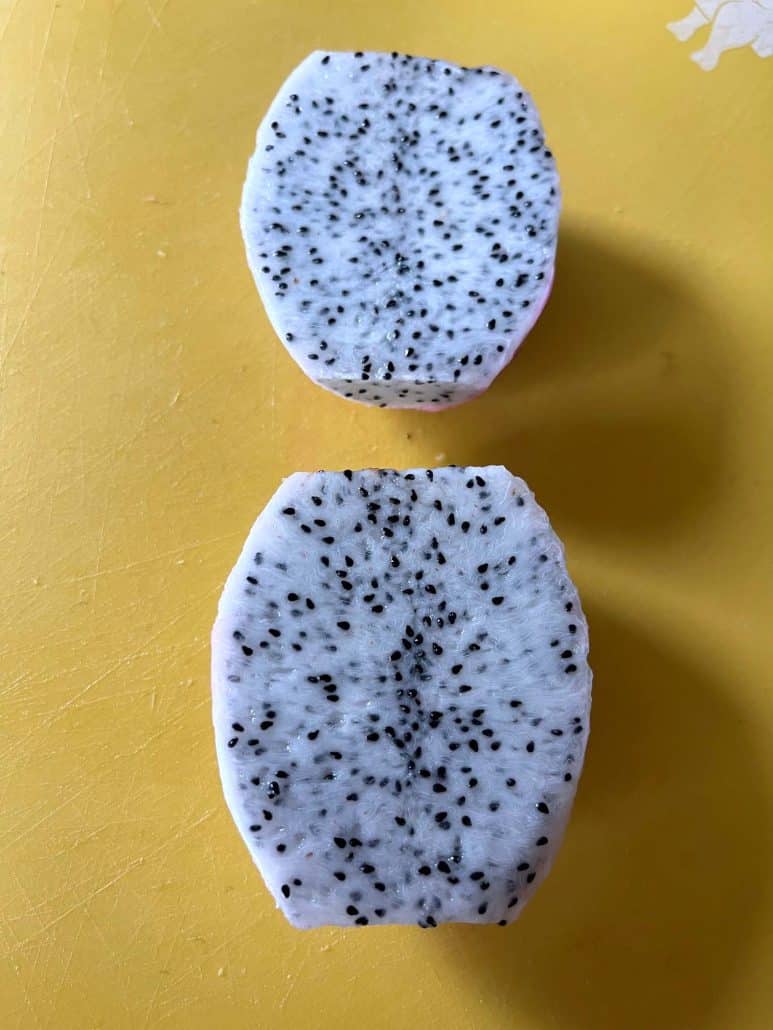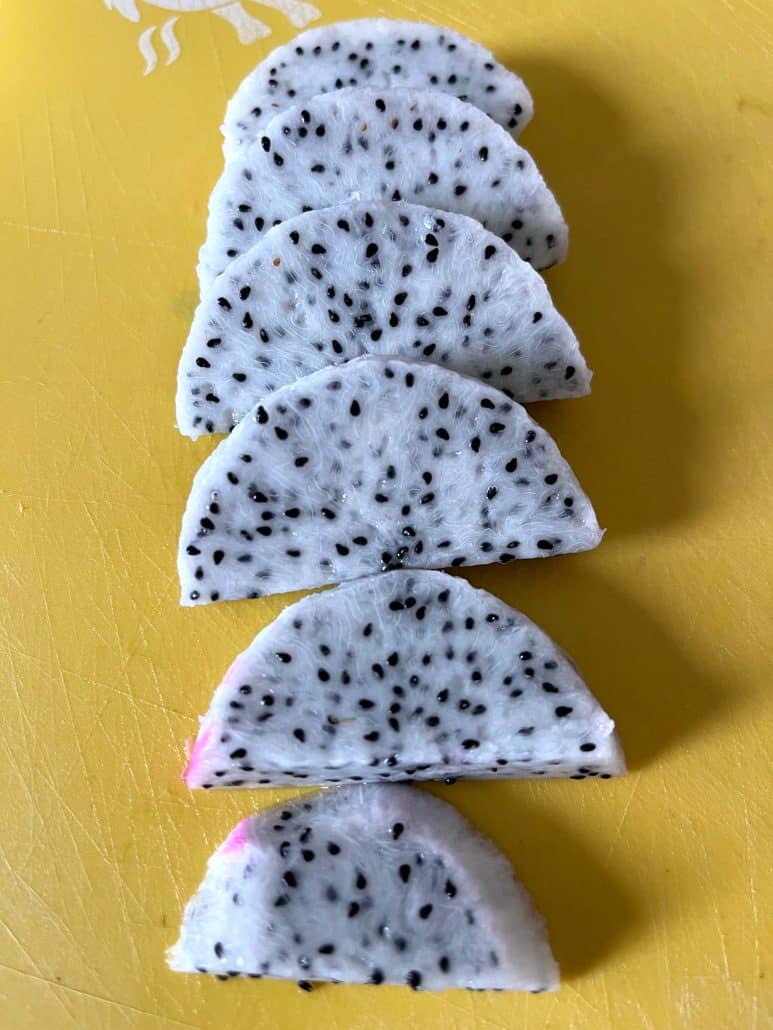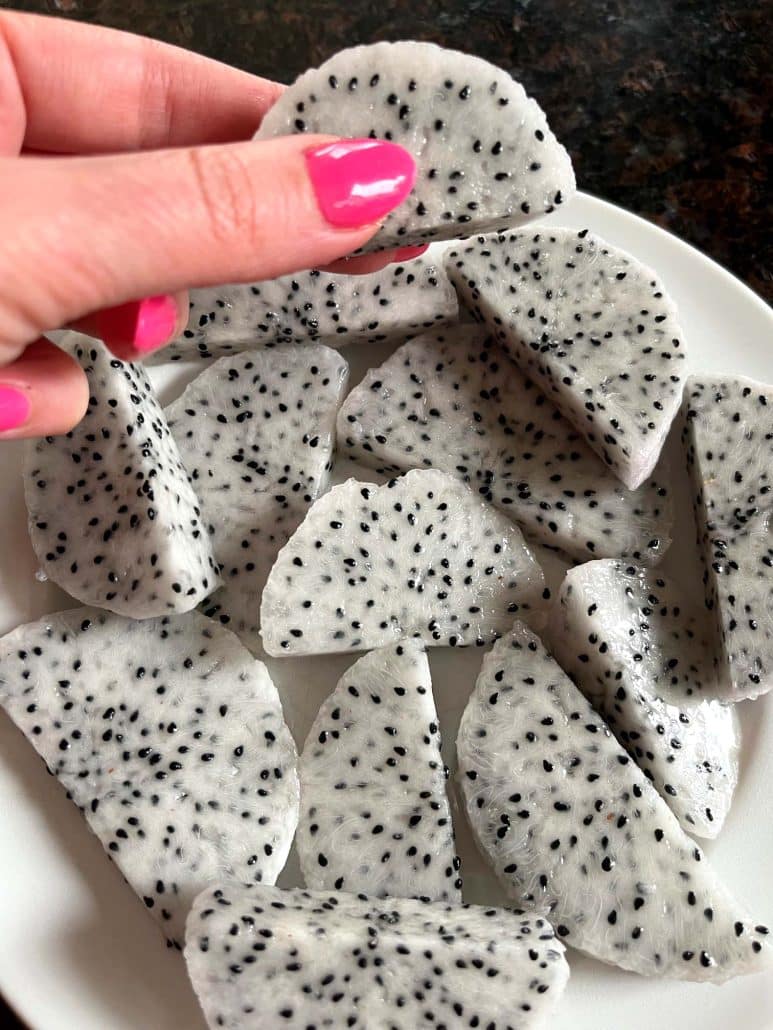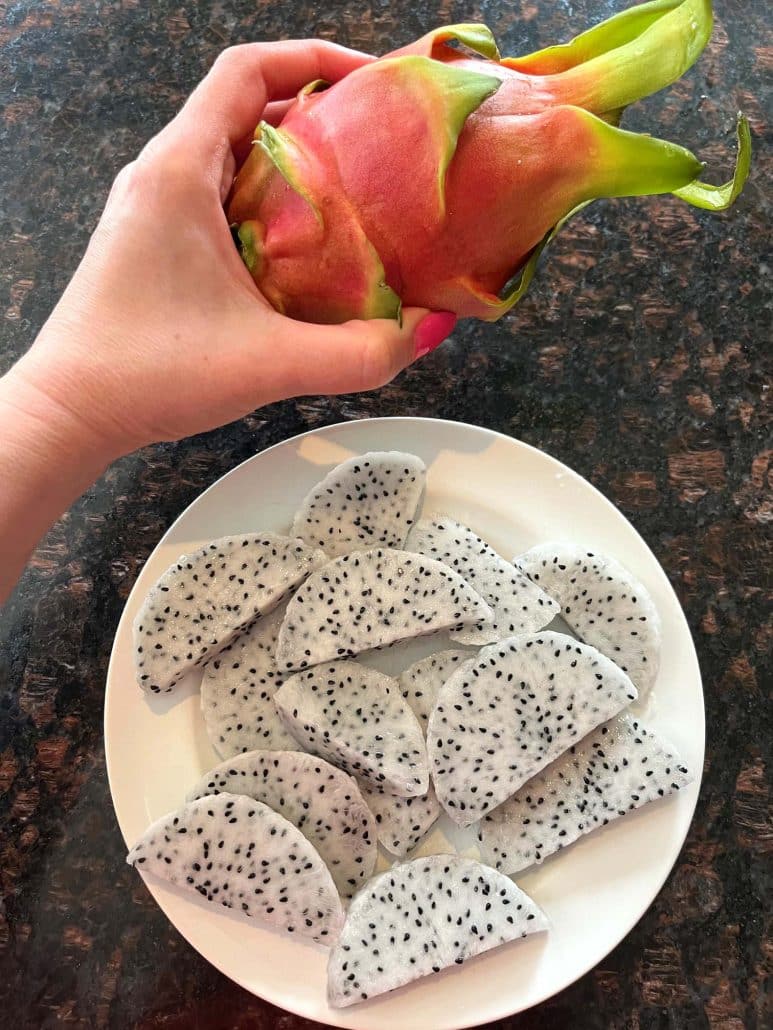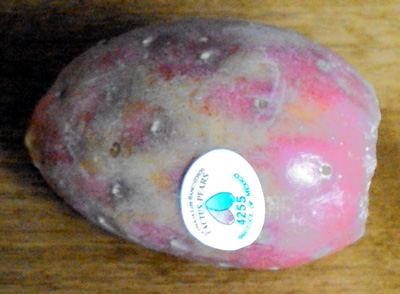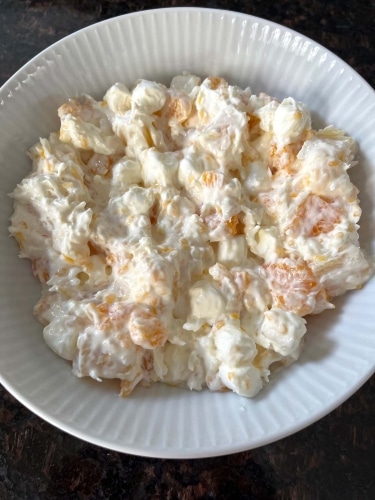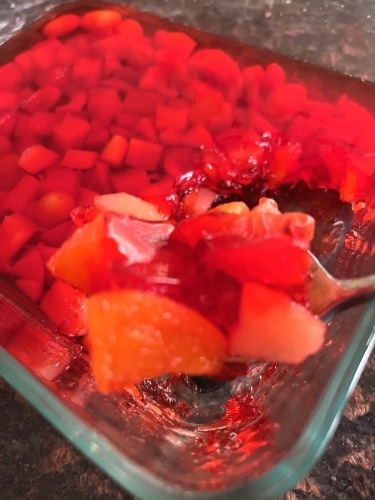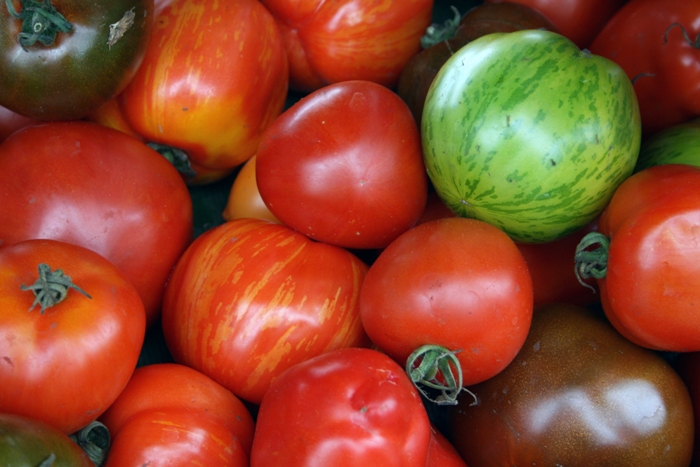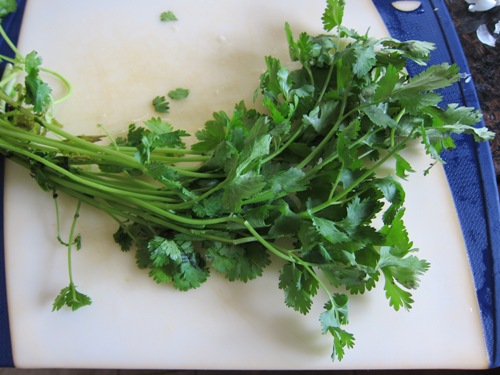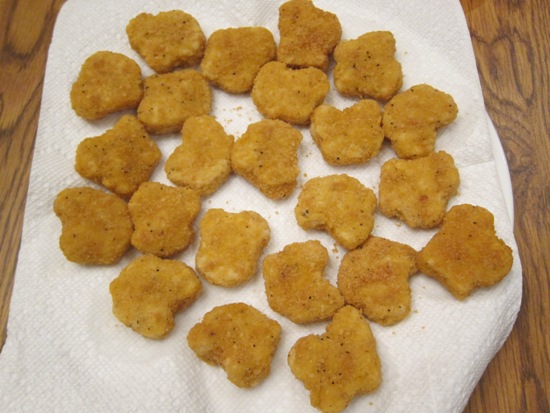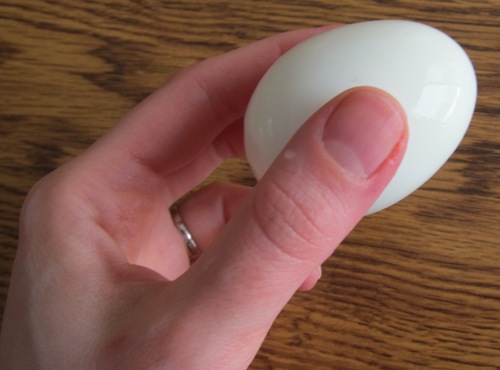How To Cut And Eat Dragon Fruit
This post may contain affiliate links (disclosure).
Dragon fruit, also known as pitaya, is a vibrant and exotic fruit celebrated for its striking appearance and numerous health benefits. Native to Central and South America, it is enjoyed worldwide for its refreshing taste and nutrient-rich profile. Packed with antioxidants, vitamins, and minerals, dragon fruit supports digestion and boosts the immune system. Despite its intimidating exterior, cutting and enjoying dragon fruit is simple. This guide provides easy steps to prepare and savor this delicious, mildly sweet fruit.
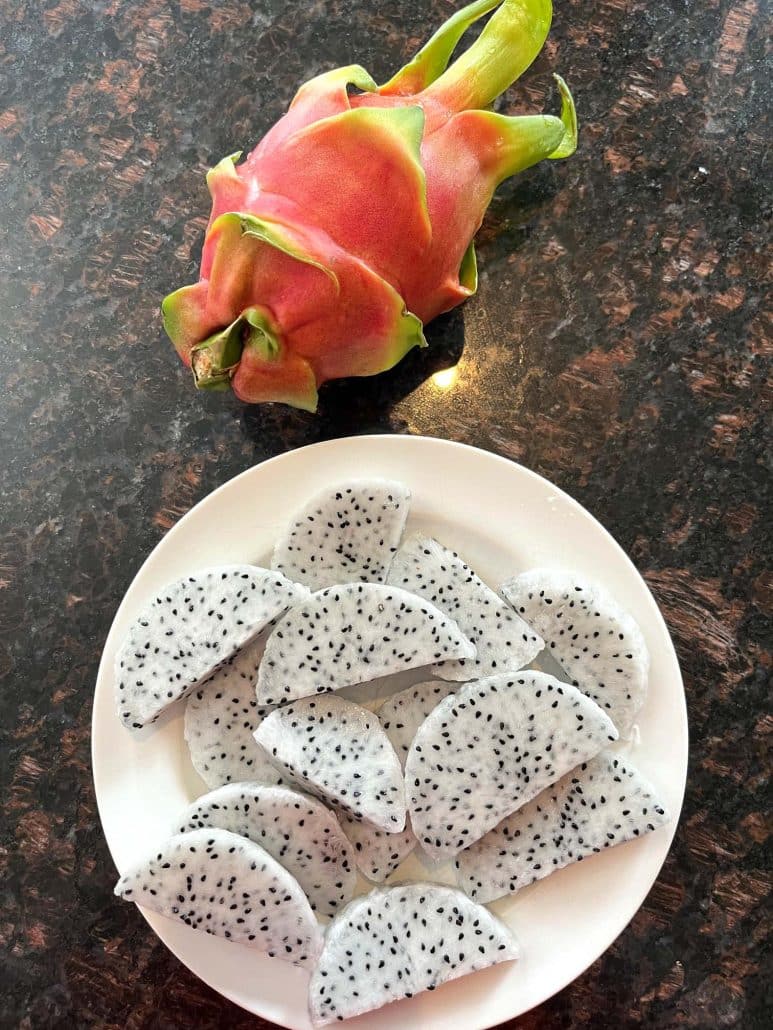
What You’ll Need
Before you begin cutting and eating your dragon fruit, it’s essential to gather the necessary materials and tools to ensure a smooth and safe process. Here’s what you’ll need:
- Dragon Fruit: Choose a ripe dragon fruit, which should have vibrant, evenly colored skin.
- Knife: A sharp kitchen knife is crucial for making clean cuts.
- Cutting Board: A stable cutting surface to prevent slipping and ensure precise cutting.
- Plate or Bowl: To place the cut fruit for easy serving and eating.
Having the right tools not only makes the process easier but also ensures safety while handling the knife and fruit. A sharp knife and a stable cutting board are particularly important to achieve clean cuts and avoid accidents. With these materials ready, you’re all set to enjoy the delicious and nutritious dragon fruit.
Step-by-Step Guide to Cutting Dragon Fruit
Step 1: Washing the Dragon Fruit
- Rinse the Fruit: Hold the dragon fruit under cold running water and gently scrub it with your hands to remove any dirt or residues. Pat it dry with a clean towel.
Step 2: Cutting Off the Ends
- Cut the Stem: Place the dragon fruit on the cutting board. Using a sharp knife, slice off the top and bottom ends of the fruit. Cut until you see the white or red flesh inside.
Step 3: Halving the Dragon Fruit
- Cut in Half: Stand the fruit upright on one of its flat ends. Carefully slice the fruit in half lengthwise from top to bottom. This will expose the vibrant flesh and edible seeds.
Step 4: Peeling the Skin
- Peel the Skin: Take one half of the dragon fruit and gently peel the skin away from the flesh using your fingers. The skin should separate easily, but you can use a knife to cut it if needed.
Step 5: Slicing the Flesh
- Slice the Fruit: Place the peeled flesh on the cutting board. Slice it into desired shapes – you can cut it into cubes, wedges, or thin slices, depending on how you plan to serve it.
Step 6: Eating and Enjoying
- Eat and Enjoy: The seeds dispersed throughout the flesh are edible. Enjoy the dragon fruit on its own, or add it to salads, smoothies, or desserts for a refreshing and nutritious treat.
By following these simple steps, you can easily prepare and enjoy dragon fruit, making the most of its delicious flavor and numerous health benefits.
Tips for Selecting a Ripe Dragon Fruit
Choosing a ripe dragon fruit ensures you get the best flavor and texture. Here are some tips to help you pick the perfect one:
1. Check the Color
- Vibrant Skin: Look for dragon fruits with bright, evenly colored skin. Depending on the variety, the skin can be red, pink, or yellow. Avoid fruits with blotchy or discolored patches.
2. Feel the Texture
- Firm but Slightly Soft: Gently press the fruit with your fingers. It should feel firm but yield slightly to pressure, similar to a ripe avocado. If it is too hard, it may not be ripe; if it is too soft, it might be overripe.
3. Inspect the Skin
- Smooth and Unblemished: Choose dragon fruits with smooth skin and avoid those with deep cuts, bruises, or wrinkling. Minor surface imperfections are okay, but significant damage can affect the fruit’s quality.
4. Check the Scales
- Healthy Scales: The scales or “flaps” on the skin should be bright and evenly colored. Dry, brown, or shriveled scales can indicate an overripe or old fruit.
5. Weight and Size
- Heavier for its Size: Pick up the fruit and feel its weight. A ripe dragon fruit will feel heavy for its size, indicating that it is juicy and fresh.
By using these tips, you can select a ripe and delicious dragon fruit, ensuring you enjoy its best flavor and texture.
Health Benefits of Dragon Fruit
Dragon fruit, also known as pitaya, is not only delicious but also packed with numerous health benefits. Here are some of the key advantages of including this exotic fruit in your diet:
1. Rich in Antioxidants
- Fights Free Radicals: Dragon fruit is high in antioxidants such as flavonoids, phenolic acid, and betacyanin, which help protect your cells from damage by free radicals and reduce the risk of chronic diseases.
2. High in Fiber
- Promotes Digestive Health: The high fiber content in dragon fruit aids digestion, prevents constipation, and promotes a healthy gut. Fiber also helps in maintaining healthy blood sugar levels and lowering cholesterol.
3. Boosts Immune System
- Vitamin C: Dragon fruit is an excellent source of vitamin C, which boosts your immune system, enhances iron absorption, and promotes healthy skin.
4. Supports Heart Health
- Healthy Fats and Fiber: The seeds in dragon fruit contain omega-3 and omega-6 fatty acids, which are beneficial for heart health. The fiber content also helps in reducing bad cholesterol levels.
5. Provides Essential Nutrients
- Vitamins and Minerals: Dragon fruit is a good source of several essential nutrients, including magnesium, calcium, and iron, which are vital for bone health, energy production, and overall well-being.
6. Anti-Inflammatory Properties
- Reduces Inflammation: The antioxidants and phytonutrients in dragon fruit have anti-inflammatory properties that can help reduce inflammation and lower the risk of chronic conditions such as arthritis.
7. Hydrating and Low-Calorie
- Keeps You Hydrated: With its high water content, dragon fruit helps keep you hydrated. Additionally, it is low in calories, making it a great option for those looking to maintain a healthy weight.
Incorporating dragon fruit into your diet can contribute to overall health and well-being, making it a delicious and nutritious choice.
Frequently Asked Questions
What does dragon fruit taste like?
Taste Profile: Dragon fruit has a mildly sweet flavor with a slightly tangy undertone. It is often described as a cross between a kiwi and a pear. The texture is similar to a kiwi, with small, crunchy seeds dispersed throughout the flesh.
How do I know if a dragon fruit is ripe?
Ripeness Indicators: A ripe dragon fruit will have vibrant, evenly colored skin and will yield slightly to gentle pressure. The scales should be bright and not shriveled, and the fruit should feel heavy for its size.
Can I eat the skin of dragon fruit?
Skin Edibility: The skin of dragon fruit is not typically eaten. It is best to peel away the skin and consume the inner flesh, which is the edible part of the fruit.
How should I store dragon fruit?
Storage Tips: Store whole dragon fruit at room temperature if you plan to eat it within a few days. For longer storage, keep it in the refrigerator, where it can last up to two weeks. Once cut, store the fruit in an airtight container in the refrigerator and consume it within a few days.
What are the different types of dragon fruit?
Varieties: There are three main types of dragon fruit: red-skinned with white flesh, red-skinned with red or magenta flesh, and yellow-skinned with white flesh. Each variety has a slightly different taste and appearance.
Can I use dragon fruit in recipes?
Culinary Uses: Yes, dragon fruit is versatile and can be used in various recipes. It can be eaten fresh, added to fruit salads, smoothies, and desserts, or used as a topping for yogurt and cereal.
Is dragon fruit good for weight loss?
Weight Loss Benefits: Dragon fruit is low in calories and high in fiber, making it a good option for those looking to maintain or lose weight. The high water content also helps keep you hydrated and full.
Are the seeds in dragon fruit edible?
Edible Seeds: Yes, the small black seeds in dragon fruit are edible and add a crunchy texture to the flesh. They are also a source of healthy fats.
By understanding these frequently asked questions, you can better enjoy and incorporate dragon fruit into your diet.
Other Cooking Tips And Easy Recipes
Easy Canned Corn Cooking Instructions: Learn the quickest and easiest way to cook canned corn for a delicious and simple side dish.
Microwave Ramen with Egg Recipe: Discover a convenient method to perfectly cook an egg in ramen using just your microwave.
Microwave Pasta Cooking Method: Find out how to cook pasta in the microwave for a fast and hassle-free meal.
Instant Pot Gnocchi Recipe: Learn how to make perfectly cooked gnocchi in the Instant Pot for a quick and satisfying dish.
Instant Pot Salmon Recipe for Fresh or Frozen Fish: Learn how to cook perfectly tender and flavorful salmon, whether fresh or frozen, in the Instant Pot with this easy guide.
Quick Microwave Frozen Edamame Preparation: Quickly prepare nutritious and tasty frozen edamame using your microwave.
Instant Pot Whole Pumpkin Cooking Guide: Discover how to cook a whole pumpkin effortlessly in the Instant Pot for delicious and versatile pumpkin puree.
How To Cut And Eat Dragon Fruit
Recipe Video
Recommended Kitchen Tools (click the links below to see the items used to make this recipe)
- Dragon Fruit
- Peeler Optional
- Plate or Bowl
Instructions
- Rinse the Fruit: Rinse the dragon fruit under cold running water to clean it.
- Cut the Stem: Cut off the ends of the dragon fruit, slicing until you see the inside flesh.
- Cut in Half: Slice the dragon fruit in half lengthwise to reveal the white flesh with black seeds.
- Peel the Skin: Gently peel the red skin away from the white flesh. The skin should separate easily.
- Slice the Fruit: Cut the white flesh into slices. You can make the slices as thick or thin as you prefer.
- Eat and Enjoy: The seeds are edible, and the flesh is refreshing and mildly sweet with a slightly sour taste.
Notes
See also:


